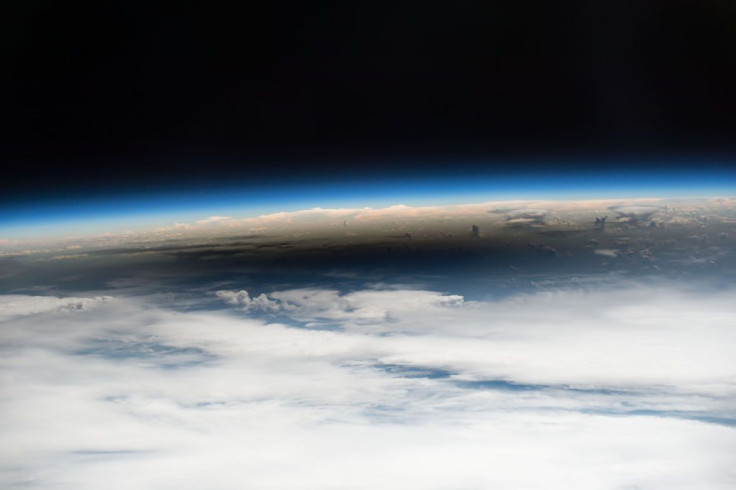Earth's Collision With Mars-Sized Planet May Be Reason Why Life Exists, Study Shows

Earth's collision with another planet that formed the Moon may have also been responsible for our planet now being able to sustain life, a new study has shown.
More than 4.4 billion years ago, a primitive Earth that had just been formed about 100 million years prior collided with a body the size of Mars. This crash was responsible for launching the Earth's natural satellite into permanent orbit around our planet. However, new research has revealed that the collision may have even more far-reaching consequences as it apparently brought with it all the necessary ingredients needed for life.
In a study published in the journal Science Advances, lead author Damanveer Grewal, a fourth-year Ph.D. student in the Department of Earth, Environmental and Planetary Sciences at Rice University in Houston, Texas, and his colleagues said that the Earth may have received carbon, nitrogen, sulfur and other volatile elements necessary to form life.
Study co-author Rajdeep Dasgupta said that previous studies on primitive meteorites proved that the Earth and other rocky planets like it in the inner solar system initially lacked these life-essential elements. However, it has never been determined exactly how and when Earth managed to get these key elements.
"Ours is the first scenario that can explain the timing and delivery in a way that is consistent with all of the geochemical evidence," Dasgupta, the principal investigator on a NASA-funded effort called CLEVER Planets that is exploring how life-essential elements might come together on distant rocky planets, said via Science Daily.
Prior to the collision, Earth resembled the composition of Mars today. While it had a core and a mantle, its non-core portion did not have volatile elements. Called the "bulk silicate Earth," elements on the non-core parts of the planet could interact with each other but never with those in the core. The primitive Earth's core did have volatiles, but they couldn't reach the outer layers.
One theory about how the Earth got its life-essential elements was that meteorites rich in volatiles, called carbonaceous chondrites, crashed into our planet and introduced the elements to the bulk silicate Earth. Scientists had argued that meteorites gave the Earth volatiles due to the fact that ratios of different versions or isotopes of carbon, hydrogen and nitrogen matched those found on these space rocks. However, the ratio of carbon to nitrogen was off. Carbonaceous chondrites had 20 parts carbon to each part nitrogen, while the bulk silicate Earth's carbon to nitrogen ratio was 40 to 1.
With this, Grewal and his team tested how sulfur, carbon and nitrogen could have divided between the core and non-core portions using a furnace that mimicked the high-temperature, high-pressure conditions during a planetary core formation. Through the experiment, they discovered that carbon is unlikely to bond with iron in the presence of high concentrations of sulfur and nitrogen. However, nitrogen is the opposite and bonds with iron even when a lot of sulfur is present. This led to the conclusion that in order for nitrogen to be excluded from the core and reach other parts of the planet, high concentrations of sulfur need to be present.
The results, along with known ratios and concentrations of elements on Earth and in non-terrestrial bodies, were fed into a computer simulation. The team reportedly ran more than 1 billion simulations before they determined the most likely scenario, which is that the Earth collided with a Mars-sized body that contained around 25 to 30 percent sulfur in its core.
"This study suggests that a rocky, Earth-like planet gets more chances to acquire life-essential elements if it forms and grows from giant impacts with planets that have sampled different building blocks, perhaps from different parts of a protoplanetary disk," Dasgupta said.
"This removes some boundary conditions," he added. "It shows that life-essential volatiles can arrive at the surface layers of a planet, even if they were produced on planetary bodies that underwent core formation under very different conditions."
© Copyright IBTimes 2024. All rights reserved.





















